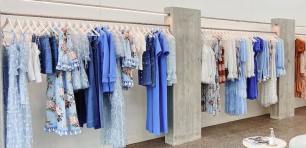
Source: Unsplash/Rupixen.
Online mega-sale Click Frenzy kicks off on Tuesday evening, offering thousands of discounts from hundreds of brands, in what one marketing expert dubs “a virtual treasure hunt”.
The two-day sale, which began in 2012, has grown to be one of the biggest online shopping events in Australia, with 800 Australian and international brands, from Adidas and Adore Beauty to Myer and L’Óreal, selling goods this year.
Queensland University of Technology marketing professor Gary Mortimer tells SmartCompany the event’s success lies in the challenge consumers face to find the best discounts.
“When you think about shopping online, it’s a pretty transactional experience. There’s no atmosphere, unlike going to a physical retail environment,” Mortimer says.
“So, when you add a level of challenge or gamification into it, such as a treasure hunt, that increases the positive experience.”
Earlier attempts to run the event often ended with the site crashing because there was so much demand for accessing the deals, Mortimer says.
“If you look back over the last couple of years, the site has crashed immediately. I think Click Frenzy organisers have now resolved that issue.
“It seems to be a more robust site and can handle a lot more traffic.”
How it works
Click Frenzy is an aggregator site that collects information from other retail outlets to offer discounts on one centralised platform.
After you subscribe and enter the site, you can search the deals by category. When you click on a specific promotion, you’re forwarded through to the retailer’s site.
Shoppers must create an account to access the best deals, including the “Go Wild” promotion of 99% off selected products, from $12 iPhones to $3 GHD hair straighteners.
But these extreme deals go quickly and consumers have to find them.
“Subscribers will sort of need to search through the site to actually be able to locate those particular deals,” Mortimer says.
“It’s a part of the experience to try and find them,” he adds.
The growth of online retail
Click Frenzy has many physical retailers participating this year, including footwear, clothing and department stores, and even hospitality businesses — all sectors that have struggled because of COVID-19.
“While online shopping has grown traditionally at … somewhere between 10% and 15% every year, the pandemic has certainly accelerated that growth,” Mortimer says.
NAB’s Online Sales Index indicates that, as of August this year, Australians spent close to $39 billion online.
That’s a growth of about 34%, according to Mortimer.
When asked about what the spike in online sales means for bricks-and-mortar retailers, Mortimer says they might consider reducing their fleets of stores.
“We’ve seen businesses like Accent Group and David Jones coming out really looking at their fleet of stores and saying, ‘if 10% or 15% or 20% of my revenue is coming from online, I don’t really need 800 stores or 64 stores’,” Mortimer says.
According to Australia Post data, between March and August 2020, more than 8.1 million households shopped online, and more than 900,000 new households shopped online for the first time.
“I think we’ll see a structural shift to online shopping,” Mortimer says.
“But I don’t think we’ll get to parity.”
Handpicked for you

The dos and don’ts of omnichannel retail



COMMENTS
SmartCompany is committed to hosting lively discussions. Help us keep the conversation useful, interesting and welcoming. We aim to publish comments quickly in the interest of promoting robust conversation, but we’re a small team and we deploy filters to protect against legal risk. Occasionally your comment may be held up while it is being reviewed, but we’re working as fast as we can to keep the conversation rolling.
The SmartCompany comment section is members-only content. Please subscribe to leave a comment.
The SmartCompany comment section is members-only content. Please login to leave a comment.